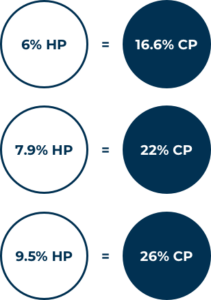TEETH WHITENING

Which professional whitening product are you using?
Phillips Zoom DayWhite 6%
Congratulations!
This is our most commonly used Zoom whitening product!
Please wear your trays for 30-90 minutes per day for 2 to 4 weeks or as directed.
Most people find before bed is convenient and effective.
Phillips Zoom NightWhite 10%
Congratulations!
This is a special product used for people with exceptionally sensitive teeth.
Please wear your trays for 4 hours or overnight for 2 to 4 weeks or as directed.
Phillips Zoom DayWhite 9.5%
Congratulations!
This Zoom product is perfect for those who are not too sensitive and have busy schedules.
Please wear your trays for 30-60 minutes per day for 2 to 4 weeks or as directed.
Most people find before bed is convenient and effective.
Phillips Zoom NightWhite 16%
Congratulations!
This is one of our most popular products used for those who find it easiest to wear trays overnight.
Please wear your trays for 2-4 hours or overnight for 2 to 4 weeks or as directed.
Phillips Zoom DayWhite 14%
Congratulations!
This is a special product reserved for highly resistant cases.
Please wear your trays for 30 minutes per day for 2 to 4 weeks or as directed.
Most people find before bed is convenient and effective.
Phillips Zoom NightWhite 22%
Congratulations!
It looks like you need a boost? This product is great for those with resistant staining.
Please wear your trays for 4 hours or overnight for 2 to 4 weeks or as directed.
For tetracycline staining please wear overnight.
This is also an ideal product for selective whitening where you may have one or two darker teeth that you can focus on lifting. Please ask your dentist if you are interested in selective whitening.
*Product selection is recommended by your dental healthcare provider based on your sensitivity level and personal whitening requirements.
CARE INSTRUCTIONS
Brush teeth / apply gel to trays / wear for recommended time
Stop using product 2 weeks prior to restorations
Avoid staining foods such as tea / red wine / berries
Avoid hot or cold food/drinks
Whitening Video Instructions
DayWhite vs NightWhite
Phillips Zoom DayWhite
- Hydrogen peroxide
- Readily available to start the instant removal of staining
- Best for patients who prefer to wear their trays for the minimal amount of time
- Most effective on yellow & brown staining
- Equivalency to NightWhite multiple of 2.765 More
Phillips Zoom NightWhite
- Carbamide peroxide
- Provides a long-acting release of hydrogen peroxide (MORE)
- Best for patients who prefer to wear their trays overnight
- Effective on all organic stain colours (yellow, brown, grey)
- Most effective for tetracycline staining.
- Equivalency to DayWhite division of 2.765 More
Frequently Asked Questions
What is the difference between hydrogen peroxide and carbamide peroxide?
Hydrogen peroxide (HP) & carbamide peroxide(CP) are the only TGA approved products for the safe use of teeth whitening. CP breaks down into HP over a period of time which is what makes it more suitable for resistant stains and tetracycline staining.
Want to know the strength of your product in terms of HP or CP? Simply use a conversion of 2.765.
What happens if I miss a day?
Absolutely nothing! Those experiencing sensitivity whiten every second to third day. This extends the overall time to complete the whitening process, however you will still achieve the same results.
How long do the results last?
Is at home teeth whitening safe?
Yes. At home teeth whitening is safe under the guidance of a qualified dental professional
using TGA approved products. Unfortunately there are products that are sold online that
are not TGA approved and have not been tested for safety for teeth whitening. There are
also counterfeit products.
We purchase our products direct from the manufacturer (Phillips).
Whitening is not safe for individuals who have:
- untreated decay
- lost fillings
- large abrasion lesions
- severe recession
- highly sensitive teeth
- cracked teeth
- mouth ulcerations,
- severe periodontitis, or
- extensive restorative work.
- Whitening is non-toxic however due to lack of testing pregnant women and
breastfeeding women should avoid whitening.
Will whitening damage my dental restorations (ceramic veneers and crowns/ composite)?
It is common for people to be overly concerned about creating a colour discrepancy between the restorative work and the newly whitened teeth. This is more likely to occur when someone is starting with severe discolouration as the colour difference will be greater.
Why are my teeth and gums sensitive?
The two most common side effects of teeth whitening are (1) tooth sensitivity; and (2) gum irritation.
Teeth can become extra sensitive to hot and cold during the whitening process. This is temporary and will resolve once complete. Consider using a lower percentage overnight whitening product for severe sensitivity and whitening every second to third night.
It is also important to incorporate the use of a therapeutic desensitising agent such as:
- Ultra EZ Gel
- Colgate Sensitive Pro-Relief Toothpaste
- Tooth Mousse application 2 weeks post whitening treatment.
Tooth Mousse is not just for sensitive teeth, it also beneficial for those with poor enamelquality or high translucency.
Gum irritation typically occurs with improper use of the product. Use the recommendedamount. Each syringe has indicators that can be followed that provides six days of use per syringe. Using too much product is the most common mistake in teeth whitening. The gel must also be evenly spread must be wiped off to prevent gum irritation. Should an ulceration occur, please stop whitening until the ulcer heals.
If you experience unusual pain or sensitivity please contact the office immediately so we can help.
Why are my teeth not as white as I would like after whitening?
There are a number of factors that affect the overall result of whitening and rest assured it is rare that teeth cannot be brightened further.
Whitening gel breaks down organic stains only. Staining which is inorganic (ie. black staining from silver fillings) is unfortunately unresponsive to whitening.
Non-vital teeth can be a multitude of colours and will not fully respond to a home whitening system and typically require whitening product to be placed inside the tooth. A painless procedure called Internal Tooth Bleaching.
Grey teeth in particular (tetracycline staining) tend to be very resistant to whitening and the entire process can take 3-6 months.
Occasionally the product is not correctly used which can affect the overall results of whitening.
- wearing a night product for less than 4 hours
- insufficient quantity of product used
- infrequent use
- highly staining diet during whitening
How do I store the product?
Keep in a cool dark place. Refrigeration not required.
How white will my teeth become?
The results of take home whitening are gradual and you can stop at any point you feel your teeth are white enough. The level of whiteness is very individual and influenced by age, quality of enamel, type of staining, and diet. It is a gradual process that peaks in 2-4 weeks. Please note you will not turn into Ross from friends overnight!
What foods should I avoid?
- Turmeric / Curry / Tomato-based dishes
- Hyperpigmented foods (blueberries, cherries…)
- Teas (green, black, white, chai, roibos, certain herbals)
- Red wine
*Coffee surprisingly does not affect the overall results of whitening, however we still recommend avoiding for 30 minutes after whitening.
Why are my teeth discoloured?
There are so many reasons teeth can be discoloured and some of these reasons respond consult with your dental provider prior to any whitening procedure.
Discolouration caused by diet is typically very responsive to whitening. Similarly, those with mild hypomineralisation lesions (genetic or bracket-induced) or mild-moderate fluorosis respond very well.
Ageing teeth are limited in the degree of whitening that can be achieved. This is often due to a naturally increasing level of translucency of the enamel which essentially allows the underneath dentine layer to shine through. Most do not realise that the dentine is actually yellow! The use of Tooth Mousse has been shown to enhance the effect of whitening by reducing the translucency.
Tetracycline staining, this is very resistant to whitening but excellent results can be achieved in 3-6 months of whitening.
Inorganic staining from metals are non-responsive to whitening.
Non-vital teeth are minimally responsive to whitening and typically require alternative treatment options such as internal bleaching and/or a crown.
